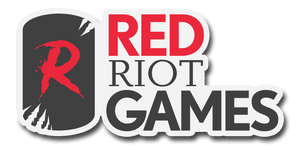Getting Lost in a Deeper Card Pool
By Dimos
In Welcome to Rathe, every class card only interacted with other class cards. Hero abilities were also generally reliant on class cards. Bravo was the only exception to this, but all generic cards that could be used with his ability had no on-hit or Crush effects. Additionally, class cards generally also only interacted with either weapons or attack action cards, rarely both. Moving on to Arcane Rising, this premise generally continued, with very few exceptions and only one that was relevant in constructed formats (Tome of the Arknight). In Crucible of War, there were some interactions but they were still semi-dependent on class cards. Hit and Run for Warrior and certain on-hit effects from Mechanologist attacks come to mind.
Generic cards interacted more broadly and with other generic cards in these sets. And those generic cards were powerful, as a necessity. With only one or two sets in a class-based game, early generics had to be strong in order to provide buildable decks in Classic Constructed with a limited card pool. Let’s take a look at everyone’s most loved or hated card: Command and Conquer. In Welcome to Rathe and Arcane Rising, there was no class-specific way to buff it or to give it go again. Only generics would interact with Command and Conquer. Then Monarch came along. Every hero had Class and Talent specific ways to buff Command and Conquer’s power and give it go again. Shadow has Shadow Puppetry, Light has Seek Enlightenment, Levia has Convulsions from the Bellows of Hell, Chane has Seeping Shadows, Boltyn has his hero ability, and Prism has Phantasmify and Luminaris. With the introduction of Talents, which offer semi-generic cards that usually interact with all cards that a hero can access, generic cards can become very strong. I think this is an interesting tension in designing the game. By offering a breadth of options in limited formats through Talents, the number of options are magnified in constructed formats because of the existing generic card pool from previous sets.
This trend continues in Tales of Aria, where Talent cards affect all cards and even all attacks, in the case of Icequake. The most salient example is Emerging Avalanche or Strength of Sequoia when compared to Emerging Power. The Elemental Guardian cards may be the first examples of power creep in Flesh and Blood, depending on your definitions. It is clear that Emerging Avalanche can do a lot more. It is, in a vacuum, strictly better than Emerging Power. Its buff applies to a broader range of attacks, and it has an optional bonus on play. Whether this is actually power creep comes down to how one values Bravo’s on-demand dominate ability combined with Guardian’s on-hit effects. I don’t think this is power creep, but it is something to keep an eye on. The one thing that is clear is that Emerging Avalanche has a much broader range of applications by virtue of it being able to buff Talent cards in limited formats, which translates to being able to buff all cards in constructed formats.


In a non-rotating game like Flesh and Blood, this new norm of Class and Talent cards interacting with all cards can lead to a lot of shenanigans. The burden of playtesting becomes a lot more extensive, as each new card that interacts with all cards needs to be considered against all those other cards. As a recent and salient example, we can examine Briar’s hero ability. Briar, by virtue of her multiple talents and class, has access to the biggest card pool in Flesh and Blood. She is also one of two adult heroes with a generic hero ability, with the other being Bravo. Briar’s generic ability applies to attack action cards and non-attack action cards, which are the majority of game pieces. In combination with Lightning cards, which are chock-full of go again and damage buffs, generics such as Snatch and Plunder Run become very powerful. The deck is not overpowered, as it loses to plenty of other decks, but it is strong. I am curious if this archetype of deck was discovered in playtesting or if it was unforeseen.
Flesh and Blood has done a great job of avoiding power creep so far, but the interaction between Talent cards, Talented heroes and generic cards may be a difficult design puzzle to continue navigating. Power creep has been the answer to the ever-growing number of interactions in other non-rotating card games, and I wonder what Legend Story Studios’ solution will be.


